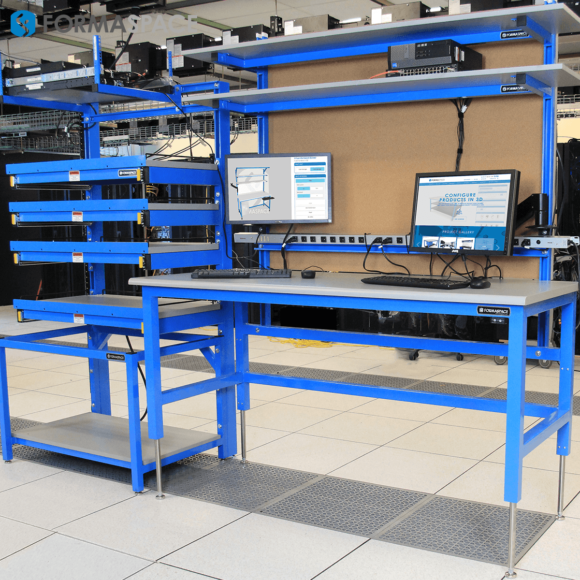Crypto Mining Uses Too Much Energy, But How Much is Too Much?
We live in a world where wasteful energy use is coming under greater scrutiny in nearly every sector, with regulators looking for new ways to cut carbon emissions –from restricting the future sale of gasoline cars to mandating better energy conservation in buildings and appliances.
Yet, as it turns out, cryptocurrency mining remains one of the world’s major energy consumers.
Can the Cyber Currency markets change on their own, or will they be forced to switch to lower energy cost methods? We investigate in this Formaspace technology report.

Analysts at the Cambridge Center for Alternative Finance (CCAF) reckon that each year crypto mining consumes just over 0.5 per cent of global energy production – e.g. about as much electricity as Sweden or Malaysia.
So far, cryptocurrency mining has been able to escape the growing reach of environmental regulations, but for how long?
It looks like the tide is turning.
In recent times, China had emerged as one of the world’s biggest havens for crypto mining operations – until the Chinese government cracked down on them to reduce the drain on the power grid and reduce China’s notorious air pollution problem.
In response, many large-scale crypto mining operations have begun relocating to areas with lower environmental regulations, such as Texas, which has recently become one of the leading centers for crypto mining since the Chinese crackdown.
But as the Texas electric grid struggles at times to satisfy growing demand and avoid outright catastrophic failures (such as during the February 2021 freeze that knocked the grid to its knees), regulators are looking for ways to reduce the burden that crypto mining puts on the power generation system.

Cyber Mining for Bitcoins: The Underlying Proof of Work Algorithm
So how did we get into this situation, to begin with?
Let’s take a look at the OG of cryptocurrencies, which is Bitcoin, to explain.
To establish Bitcoin as a currency that operated outside the hands of administrators (or regulators, as critics maintain), there needed to be a way to issue new specie (e.g. coins) without flooding the market too quickly and tanking the value of the new Bitcoin.
The solution, crypto mining, is actually very clever.
In effect, it simulates the work done by miners digging into the earth to find gold nuggets.
And, like real gold mining, cyber mining is very competitive.
But instead of digging or panning for physical gold, each cyber miner tries to outcompete its rivals in performing “proof of work” algorithms, e.g. trying to come up with the right answers to complex mathematical problems – before its rivals can – and get rewarded with a shiny new coin as a result.
As you can imagine, the faster you can make the calculations for the mining problem, the more chances you have of coming up with the right answer.
To gain a competitive advantage, professional cyber miners have created huge data centers full of souped-up computing machines – equipped with powerful processors, heaps of memory, and advanced graphic card systems, all tuned to spit out as many plausible answers as fast as possible, in the hopes of beating the competition to win the next coin that is issued.

A Proof of Work Alternative: The Ethereum Proof of Stake
As time has passed and crypto mining has become more competitive, there has been an accelerated arms race to create the biggest and baddest crypto mining datacenters.
But this comes at a giant cost.
Neighbors living near these mining datacenters complain about the incessant roar created 24×7. Local utilities have to source more power and/or upgrade their supplies and reserves to serve the heavy power requirements these centers draw. And the environment suffers, as cyber mining has become, in the view of critics, a major source of unnecessary carbon emissions.
But is there another way to accomplish these goals without gobbling up huge amount of electric power and computer resources that could be put to better use?
One of the leading competitors to Bitcoin, Ethereum, saw the handwriting on the wall.
Rather than wait for regulators to step in, they decided to gain a jump on their cyber coin competitors and migrate from a “proof of work” system to a “proof of stake” instead.
How Does the New Ethereum Proof of Stake Algorithm Actually Work?
So what’s the difference between a “proof of work” and a “proof of stake” system?
At its heart, the conventional Proof of Work system used by Bitcoin demonstrates “skin in the game.” Crypto Miners demonstrate good faith by expending their own computer resources (and energy) to submit answers to cryptographic puzzles offered up by the system – in hopes of winning a new coin. This approach not only helps “fund” the necessary bookkeeping tasks (e.g. recording new transactions on the blockchain), it also helps weed out interlopers intent on mischief, such as those intent on pounding the server with pointless requests (e.g. Denial of Service attacks) or sending spam emails.
Ethereum’s new system is different.
Its Proof of Stake system “validates” users and their transactions based on the quantity and quality of coins they have previously acquired. The thinking goes that having a large number of coins on hand is an indication of trustworthiness, while the relative “age” of the coins (older = better) helps validate that the user is not a fly-by-night, Johnny-come-lately interloper bent on taking over and manipulating the system.

How Quickly Can We Move toward a More Energy Efficient Crypto Currency Marketplace?
The number #1 benefit of moving to a Proof of Stake approach is energy savings.
Ethereum’s energy usage has plummeted since making the switch. It now uses just 1/1000 of the power it once did.
If the approach pioneered by Ethereum proves to be successful, it will place additional pressure on other cyber coin systems to follow suit.
If the cyber currency industry doesn’t act on its own, new government regulations may be imposed on it – sooner than later.
Already, the vice-chair of the European Securities and Markets Authority (ESMA), Erik Thedéen of Sweden, has called for a ban on “proof of work” crypto mining due to its undue burden on European energy supplies.
In March 2022, the Biden administration asked the White House Office of Science and
The new OSTP report (published September 8, 2022) calls for establishing new standards for crypto mining operations to achieve “very low energy intensities, low water usage, low noise generation, (and) clean energy usage by operators.”
Based on these findings, it’s likely that the EPA and the DOE will be looking at new ways to regulate the energy consumption of crypto mining operations in the near future.
Formaspace is Your Partner for Efficient IT Operations
If you can imagine it, we can build it, here at our factory headquarters in Austin, Texas.
Find out how we can make your IT workspace more efficient and ergonomic.
Talk to your Formaspace Design Consultant today.








